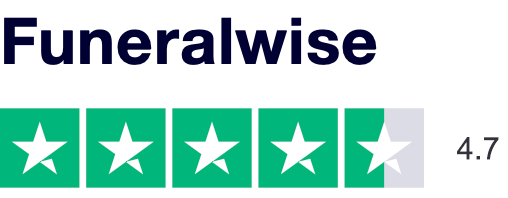Cross-Cultural Funeral Service Rituals
By LaVone V. Hazell, MS, FT, LFD
 For the past two decades, the traditional funeral rite has been in transition for various reasons: changes in social stratification due to a declining economy and shrinking resources; increased immigration to the United States; neo-local spread of the family to many geographic locations; increased demand for cremations; decline in religious practices and increased secular observances; and a shift from ancestral to contemporary funeral rites.
For the past two decades, the traditional funeral rite has been in transition for various reasons: changes in social stratification due to a declining economy and shrinking resources; increased immigration to the United States; neo-local spread of the family to many geographic locations; increased demand for cremations; decline in religious practices and increased secular observances; and a shift from ancestral to contemporary funeral rites.
However, in thanatological terms, there are cultural universals that have remained consistent in funeral services: announcing the death, care of the deceased, a method of disposition, a possible ceremony or ritual, and some form of memorialization.
According to sociologist Norman Goodman, Introduction to Sociology (1992) the United States is characterized as a “nation of immigrants,” reflecting vast cultural diversity. Within a culture, there are many subcultures possessing unique traits that set them apart from each other. As a funeral service professional, I have been privileged to arrange and direct funeral rites that have been rich in cultural diversity. I, for more than two decades have felt privileged to be part of a society that requires the care and respect of the dead, regardless of the social, economic, religious or ethnic position of the deceased within the community.
African-American Funerals
The majority of funerals that I have arranged have been for African-American families. Dr. Ronald K. Barrett, in Contemporary African-American Funeral rites and Traditions (1995) states that “descriptions of contemporary African-American funeral and mourning customs illustrate the persistence of traditional customs despite time and circumstance.” Within the African-American community, there exists a wide array of burial rituals which are specific to ancestral roots in West Africa. Funeral rites of the Caribbean tend to be elaborate, steeped in religious ceremony (usually Protestant), and grounded by cultural heritage. Despite the declining economy, the last rites are considered the final rite of passage for those whose elders passed down specific customs from the West Indies. The funeral is a communal affair in which each person has explicit duties to perform.
There can be a period of more than a week from the time of death to the burial, either to transport the deceased back to the West Indies or to accommodate the arrival of family from that location. The few cremations that are requested by African-Americans of Caribbean descent take place only after the same traditional viewing and funeral service. The lowering of the body and covering of the grave is considered mandatory, which might explain the reason for small numbers of cremations.
Recommended Reading: African American Funeral Customs
African-Americans whose heritage is ingrained in Southern tradition follow many of the practices of Caribbeans. There has been a rise in cremations, however, not as a result of a declining economy but because of the desire of the deceased to have the cremains spread in the land of their birth or with their ancestors. There has been a marked change in specific funeral rituals in that the order of service includes far more secular as opposed to religious activities. Many of the services are held in the funeral home rather than in the church, and the music is more contemporary. “Amazing Grace,” which is a standard funeral spiritual, has been replaced by Frank Sinatra’s “My Way” or other more current songs.
The wake may also include a video presentation of the life of the deceased with her or his favorite music (for example, jazz) playing in the background. The religious items historically placed in the casket have been replaced with the favorite items of the deceased, such as CDs, a microphone of a former disc jockey or a stethoscope around the neck or a former doctor. The Southern African-American appears to make a statement about the life of the deceased with the items she or he chooses to display in the casket. This is unlike Caribbean mourners who place artifacts in the casket that are far more secretive (for example, a lock of a survivor’s hair in a special pocket).
At times economics underlie cultural decisions regarding the funeral rite. One widow who was making arrangements summed up a pervasive feeling within the African-American community saying, “After working so hard all his life, my husband didn’t have much to show for his efforts. The last thing I can do for him is give him a fine and proper burial.” With these words, she used his entire insurance policy on the funeral. In more depressed socioeconomic communities, however, a traditional funeral would deplete the finances of an entire family. They may need a government subsidy or may be forced to choose a direct cremation or burial with an accompanying memorial service. This decision is very difficult for African-American to make particularly if the deceased held a major position within the family.
African migrants to the United States steadfastly hold on to their ancestral rituals in their funeral rites. Economics is a secondary factor for Africans, because the entire community is required to contribute to the expenses, food, and necessities of the family. The higher the social position of the deceased, the more complex and expensive the funeral rite. The wake is spread over many days: the funeral begins and ends with ritualistic drumming, singing and dancing and libation is poured as the priest speaks in the language specific to the common ancestry or geographic location of the family in Africa.
There is a procession following the services from the funeral site to the final resting place, with continued drumming, singing and dancing, or to the airport where the deceased is to be returned to “the Mother-Land” for burial with the ancestors. The role of the funeral director becomes more challenging without having the traditional guidelines of most religious services to follow, because there can be a spontaneous change in the movement and logistics of the funeral rite.
Muslim Funerals
In African funerals, the members prefer the services to be directed by men, as is also prevalent in Muslim funeral rites. Muslims and African migrants also prepare the deceased within the funeral home themselves; men prepare males and women prepare females. The major difference in the funeral rites of the Muslims is the time span allowed form the death to the burial, with the custom of the Muslims requiring twenty-four hours.
Funeral rites are based more on ritual rather than economics or social standing within the sect. Embalming and cremation in both groups are considered taboo. The Muslims also turn the deceased to the East in the casket, arrange the funeral site with the chairs facing East and bury the deceased with the grave facing East to Mecca (The Holy Land). Most services are conducted in the mosque.
Recommended Reading: Islam Funeral Customs
The funeral rituals are officiated by the Imam (Muslim religious leader) with specific recitations from the Holy Qur’an given by Muslim brothers while facing the casket. Viewing of the remains is strictly prohibited.
Latin American Funerals
In contrast, Latin Americans hold wakes for a minimum of two days (for twenty-four hour spans), with an open casket for viewing, a full Catholic funeral Mass and burial in a Catholic cemetery. Funeral rites are also communal events within the Latin culture. Social position and economics are secondary, with all family, religious and community members donating whatever is necessary to give the deceased a “proper” burial. The Latin-American community has also embraced the Pentecostal religion.
There isn’t a pronounced variation in funeral rituals among Hispanics of Cuban, Puerto Rican and Dominican descent. One custom that does differ in the Latin American culture, as compared to other cultures, is the use of photography of the deceased during parts of the funeral rite. A family member explained that the pictures were used as a marker to preserve the death as an important historical event in the heritage of the family and also as an acknowledgment of the “Rite of Passage” for the deceased. In more than any other cultural funeral service, children are significantly included in the entire rite. Reverence for the dead from one generation to another is held in very high esteem. Latin Americans show no particular interest in the adaptation of contemporary or secular rituals during the funeral rite.
Buddhist Funerals
My experience with Asian-American funeral services has been limited to only Buddhist ceremonies. There is a strict protocol surrounding the funeral rite. The wake lasts from one to three days, with an open casket and an altar “bustsudan” set up with fresh flowers, fruits, a bowl of water, incense and a candle.
The members of the Buddhist sect chant for approximately one hour before the services begin. A procession of viewers line up on either side of the room and place a pinch of ashes into a bowl as each one says a personal prayer for the deceased. When the viewing ends, the Buddhist priest sounds a gong and proceeds to officiate over the funeral. When the priest concludes his prayers, several members of the group come forward and speak about their personal experiences with the deceased.
Recommended Reading: Buddhist Funeral Customs
The rituals during one particular service did break from tradition, with the playing of two jazz renditions of the deceased’s favorite songs. The service ended with a family member acknowledging with gratitude the entire group and their offerings. A private cremation, which is the disposition of choice in Asian culture, took place on the following day. The Buddhist priest is allowed to accompany the deceased into the crematory and witness the actual cremation.
Contemporary Buddhist funeral rites are adapted at the request of the family, but the initial chanting and priest offering, which is inherent in the Asian culture, remains rigidly traditional. The services tend to be elaborate, communal and highly symbolic. Often entire families have migrated to America, bringing funeral rituals which are firmly entrenched in the roots of their Asian culture.
Despite great cultural differences in last rites, “the funeral represents a near universal response to a universal situation. In the enormous variety of funeral practices, each funeral rite affords the comfort of tradition in its own place,” comment Habenstein and Lamers, Funerals (1974).
Conclusion
The continuity that extends across cultures suggests that funerals are not only to provide solace for the living, but to assure that ritual, attention and honor are respectfully, ethnically and appropriately given to the deceased. For more than two decades, in my experience, the traditional American funeral still ranks highest in use among most cultural groups. As a funeral service practitioner, I am entrusted with the responsibility of conducting each and every funeral with personal attentiveness and dignity: and to appropriately adapt the funeral arrangements to fulfill the economic, religious, contemporary, or traditional protocols of the families that I serve.
About Lavone Hazell
Certifications:
- New York State Licensed Funeral Director
- Certified Funeral Service Practitioner with the Academy of Professional Funeral Service Practice
- Certified in thanatology as a fellow (FT): Death, Dying, and Bereavement, by the Association for Death Education and Counseling (ADEC)
- Board Certified Expert with the American Academy of Experts in Traumatic Stress
- Certification in Family Therapy from Fordham’s School of Social Services
Ms. Hazell was the designer and Project Director of The Palliative Care Training and Education Program for Caregivers in Minority Communities (PTEP), sponsored by North General and Memorial Sloan-Kettering Hospitals. With more than twenty-five years of training experience, she has developed curricula for mental health, religious, educational and legal institutions. She has also published numerous academic articles and book chapters in the field of thanatology. Her major interest is the influence of culture and diversity concerning death rituals and the comparison of various minority groups’ practices relating to end-of-life events.
Ms. Hazell was an elected member of the Board of Directors for ADEC for two consecutive three-year terms, is Mortuary Officer for the United States Federal DMORT Region 2 Disaster Team, a Faculty Council Member and an on-campus and an online faculty instructor for the American Academy McAllister Institute of Funeral Service, Inc.
She is also a graduate of Howard University, with a B.S. in Psychology and Fordham University, with an M.S. in Adult Education and Human Resources.

